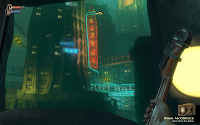Developer/Publisher: Amplitude Studios
Release Date: 4 Jul 2012 (Steam)
As a brief aside, I'm going to attempt to make my reviews more brief. After all, the intention of this series was to get me to go through my Steam collection. If my reviews seem shorter than they should be from this point onwards, that may be why.
Endless Space is an indie Space 4X strategy game. It follows in a very similar vein to Galactic Civilizations with all that entails. The design is a mixture of basic and artistic. The UI is quite minimalist and basic, making it very clear to read and understand what's going on, but at the same time not necessarily making it 'beautiful'. However, a lot of effort has clearly gone into making the artwork, where it exists, look 'in-universe' and rather unique. There's not so much of a brushwork feel to it that you get in artwork for more fantasy-oriented games, but the images in many screens do have that feel of fantasy. Ships can be created and customised by players, but looks rely on the selection of the 'base' model, each of which have unique styles for each race.
The backstory is also similar to the GC series, with artifacts of the Endless (the equivalent of GC's Precursors and Arnor) appearing periodically, and their unique 'Dust' resource featuring as the game's currency. Much like GC2, the game is turn-based, and you can set up production on planets, move fleets, and engage in battles, as well as create your own ships from researched components, plus the obvious research via a 4-branched tree (2 of which will trigger victory scenarios) focusing on different 'types' of tech, then Diplomacy.
An interesting feature of Endless Space is that rather than using 'Governors' you can recruit from a limited pool of 'heroes' that require upkeep, but will level up with experience (gained over time when running a system or through combat XP as a fleet), which makes them both more skilled and more valuable. Fortunately you can't lose heroes in battle, which makes investing in them for fleets very useful.
Production in systems takes one of three forms, and you can only construct one thing at a time per system. You can build any ship you've designed (and for which you've acquired the necessary resources, for more advanced designs), system wide improvements, that grant bonuses at the cost of monetary output, and planetary exploitation, which involves the improvement of ancient artifacts, survey of the planet's moon (if it has one), or selecting from one of the 4 or so available planetary exploitations, which improve food, industrial, monetary, or scientific output. You can only build one main exploitation per planet, and some provide better bonuses depending on the planet's type.
Travel is similar to Sword of the Stars in this game, with fleets following hyperspace links between planets. You can also traverse wormhole/warp links once a special technology is researched, but moving through these links behaves differently. Whilst using normal links consume movement points whilst travelling, these links use all movement points in one go.
Combat is again somewhat like SotS, but Endless Space allows you to play a variety of Battle Action cards, which fall into different categories that can cancel each other, giving combat bonuses on top of stats provided by your ships' equipment. You can rely on auto-resolve or battle manually. I haven't spent a lot of time with manual battles, but my recollection was that it was similar but less complex than SotS, but the auto-resolve is usually reasonably fair with it's battle outcomes.
This game began life in an interesting manner. Amplitude is a studio founded by a few industry veterans who were keen on getting more community involvement in the game and it's development. As a result, Endless Space appeared on Steam in fairly early development as a 'beta', and invited people to join their forums and give feedback and suggestions for the game, to which they've done a good job of listening to. This has become increasingly popular with many of the 'indie' companies and we're seeing better games as a result, in my opinion. The studio is, as far as I'm aware, gearing up for other titles, but are committed to supporting this game in the future.
For my final verdict, I would say that there's now a lot of choice for this genre of game. I still stand by the original Galactic Civilizations and one of the genres classics, but Endless Space does well to cut through a lot of the clutter that makes other games bloated, whilst still providing a fairly polished experience. If this game isn't in your collection, it would make a pretty good addition, especially with on-going dev support.










































































